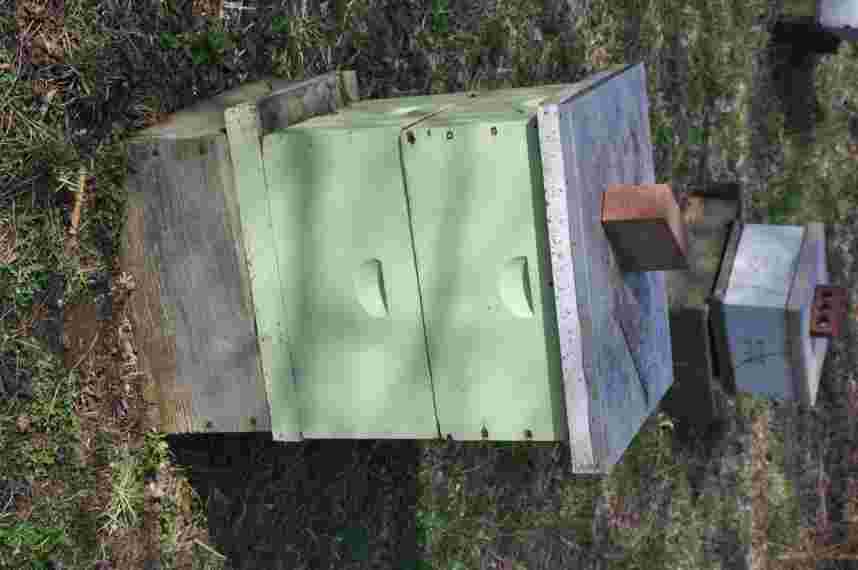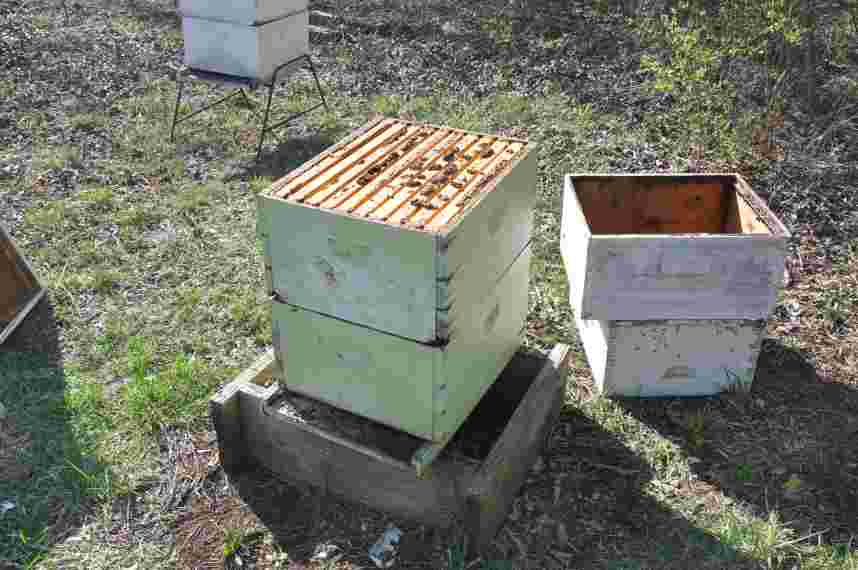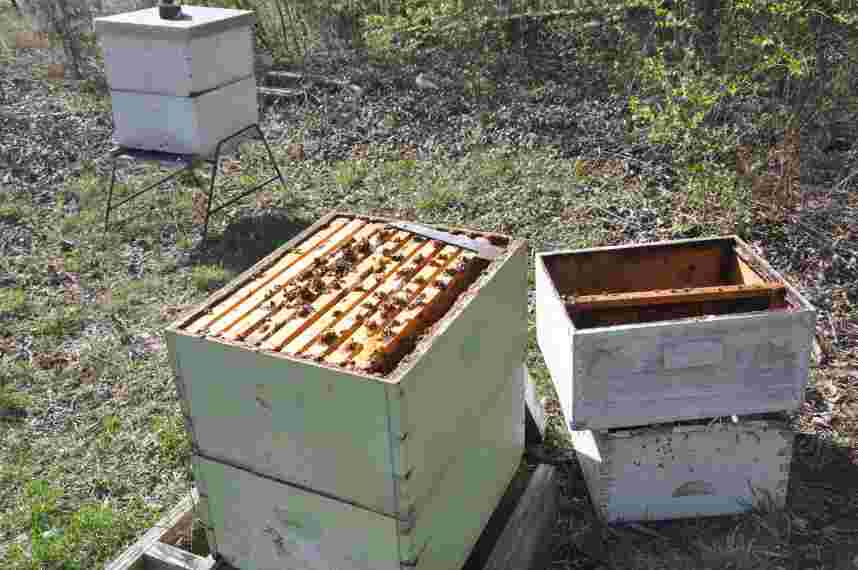Yes, hive bodies get heavy, especially when they are full, or mostly full, of honey. And at times, even brood boxes will contain a lot of honey, such as in the spring after a mild winter. Beekeepers have three sizes of boxes, the most common being deep hive bodies (which are 9 - 5/8” in height), and shallows – most often used as honey supers (these are 5 – 11/16”) in height, but also medium supers – also most commonly used as honey supers (6 – 5/8” in height). All these boxes are also designed to hold 10 frames, but sometimes beekeepers will reduce the number of frames used, which reduces the weight slightly. Now to the heavy, the weight of these boxes when full of honey. A full deep will weigh around 80 pounds or more, which is a “very” heavy load to lift, for anyone. Even a shallow super when full of honey weighs about 40 pounds, and a medium 50 pounds. But for those who are not serious weightlifters, and especially for those of smaller stature, including women beekeepers, and older beekeepers, the weight of the boxes MAY be an issue. And somewhere in time I became one of those older beekeepers, though I can still lift an 80-pound box, but every year it gets harder, Years ago my friend the late Carol Mark, who was an Eastern Apicultural Society Master beekeeper from the Owensboro area, and small woman, but very smart (a retired engineer). Carol and I were once discussing the lifting of bee boxes, and she told me that she had no problem with even the heaviest boxes, it was just a matter of how to do it. Because Carol had a method of lifting them off, and it did not depend on her having a lot of muscle power.
In my hives I mostly always use two 10 - frame deeps as brood boxes, since my goal is to produce honey, and this configuration results in maximum frame surface area for producing brood and gives me the maximum number of bees in my hives in late spring. And still only requires a total of 20 brood frames. Hives are like factories, the more workers we have, the more honey the hive will produce. This spring when I started my first through hive checks, where I wished to look carefully at each brood frame, the top brood boxes were pretty heavy since it had been a mild winter, and my colonies each had several frames of honey remaining in them – mostly in the top boxes. This made for some heavy deeps to be lifted off so I could inspect the frames in the bottom boxes. I really was not enthusiastic about lifting even 60-pound deeps due to my back giving me problems, so I employed Carol’s method of lifting the deeps.

My first task was to retrieve a couple of extra deep brood boxes from my “bee building” (beekeeping storage building). I really just needed one deep box, but I used the second just to get things off the ground a bit more, my back also doesn’t like a lot of bending over.

I then proceed to remove and examine the frames in the top brood box, as I described in my forum post “ What I look for on the frames when checking my hive.“ I start with the end frame, look at it, then (and this is where I begin Carol Mark’s method for lifting heavy hive bodies) I place this frame into the empty deep box sitting next to the hive.

I next check the 2nd, frame in top deep- the 3rd, 4th, and 5th frame, and after examining these frames I place them into the what was an empty deep box next to the 1st frame removed.
I have now removed half of the frames in the top box and have about 30 pounds in each deep box - including the original top box with 5 frames, and the extra box with 5 frames. I then check the rest of this now empty top box, replacing them back into the original box as I proceed. And then set this half empty top box over the half empty box into which I had placed the other frames. (Sorry no photos here.) I then check each frame in the bottom box, starting with the end frame, which I place on the ground to make more room to remove the rest of the frames - one by one. These frames in the bottom box are put back in the bottom box as I proceed, again as I described in the Forum Post “ What I look for on the frames when checking my hive.“ If the bottom box is empty, as it may be this time of year, I can set it off onto the ground, clean the bottom board, and set the half empty top box onto the bottom board. Followed by the other 5 frames from the extra deep. Then set what had been the hive's bottom box, on top of the former top box - which is now the new bottom box. I have now reversed the hive bodies – without lifting what had been the heavy 80 pound top deep brood box.
I know that some will advocate using 8 frame equipment, which are smaller boxes, designed to only hold 8 frames. But if you have a 80 pound box, the beekeeper reduces the weight by about 20%, (2 frames/10 frames) x 80 pounds which equals 16 pounds, 80 pounds – 16 pounds equals 64 pounds, which is fine if lifting 64 pounds works for you. It does not work for me; I would much rather lift 40 pounds twice, versus a 8 frame 64 - pound 8 frame deep. Or even 50 pound mediums. That 80-pound box can also be reduced even further, as much as is needed, by just removing even more frames. This was Carol’s method. Try it out.